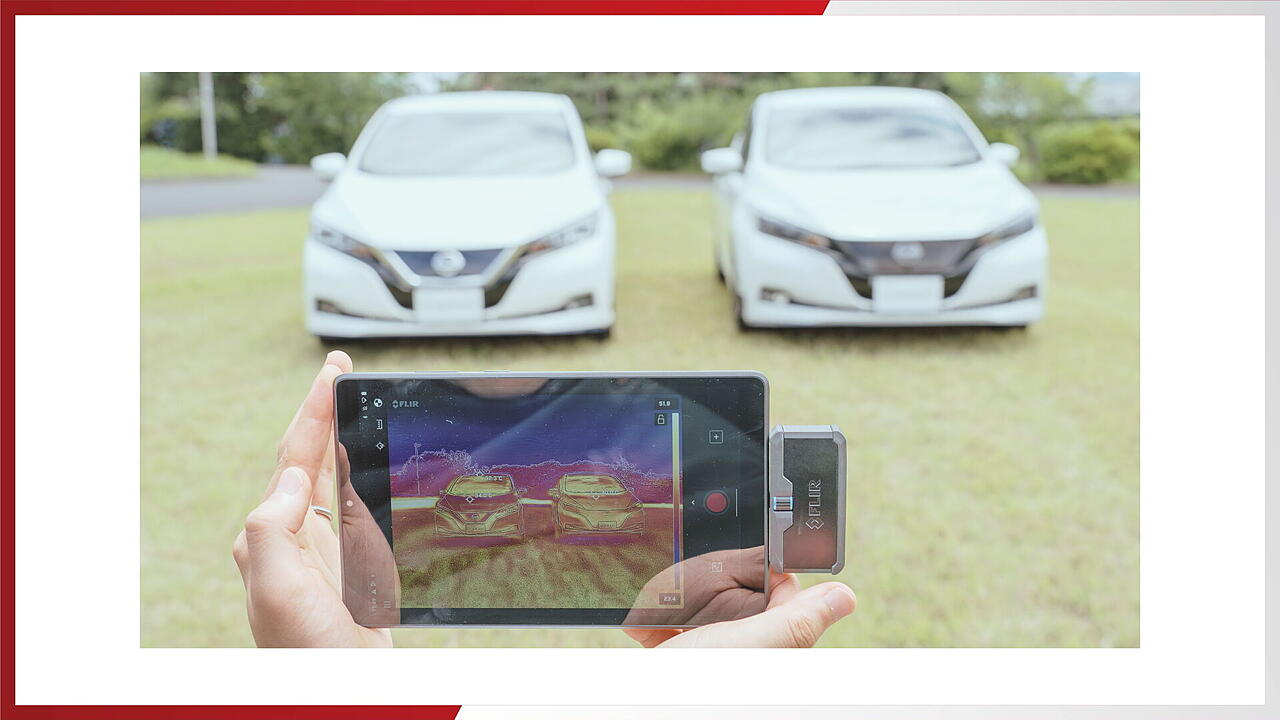
Nissan is trying an automotive paint designed to lower vehicle cabin temperatures during summer and reduce the energy consumption of air-conditioning systems. Developed in collaboration with Radi-Cool, a specialist in radiative cooling products, the paint incorporates metamaterial—synthetic composite materials with unique structures that exhibit properties not typically found in nature.
The project is part of Nissan’s broader initiative to innovate and create a cleaner, more sustainable society. The company began a 12-month feasibility trial in November 2023 at Tokyo International Air Terminal at Haneda. This trial, conducted in partnership with Japan Airport Terminal Co Ltd, Radi-Cool Japan, and All Nippon Airways (ANA) airport services, involves a Nissan NV100 service vehicle operated by ANA.
Although still in the testing phase, the results have been promising. When parked side-by-side under the sun, a vehicle treated with Nissan’s cool paint showed a reduction in exterior surface temperatures of up to 12 degrees Celsius and up to 5 degrees Celsius cooler interiors compared to a vehicle with traditional automotive paint.
The paint’s cooling performance is particularly beneficial when a vehicle is parked in the sun for extended periods. A cooler cabin not only enhances occupant comfort but also reduces the air-conditioning run-time needed to achieve a comfortable temperature. This decreases the load on the engine or, in the case of electric vehicles, the battery, thereby improving overall efficiency.
The metamaterial embedded within Nissan’s cool paint features two types of microstructure particles that react to light. One particle reflects near-infrared rays in sunlight, which typically cause heat generation in traditional paint. The second particle creates electromagnetic waves that counteract the sun’s rays, redirecting energy away from the vehicle into the atmosphere. Together, these particles significantly reduce heat transfer to surfaces such as the roof, hood, doors, and panels.
Leading this development is Dr Susumu Miura, senior manager and expert at the Advanced Materials and Processing Laboratory at Nissan Research Centre. Known for his work on Nissan’s noise-reducing acoustic material, Miura has dedicated much of his career to making cars quieter, cooler, and more efficient. “My dream is to create cooler cars without consuming energy,” Miura explained. “This is especially important in the EV era, where the load from running air-conditioning in summer can have a sizable impact on the state of charge.”

Radiant cooling paint is not a new concept, typically used for buildings and structures where it is applied thickly with a paint roller and lacks a clear topcoat, often leaving a chalky residue. Miura’s challenge was to adapt this technology for automotive use, ensuring it could incorporate a clear topcoat, be applied with a spray gun, and meet Nissan’s stringent internal standards for paint quality.
Since commencing development in 2021, Miura and his team have tested over 100 samples, evaluating a thickness of 120 microns—about six times thicker than standard automotive paint. They have confirmed resistance to salt, chipping, peeling, scratches, chemical reactions, along with colour consistency and repairability. As development continues, the team is exploring thinner options that maintain the same level of cooling performance.
While testing and development are ongoing, Miura and his team hope that this cool paint can eventually be offered for special orders in various colours. Miura sees strong potential, especially for light commercial vehicles such as vans, trucks, and ambulances that spend most of their time driving.
Also Read
Nissan Outlines Path To Sustainable Future In Integrated Report 2024